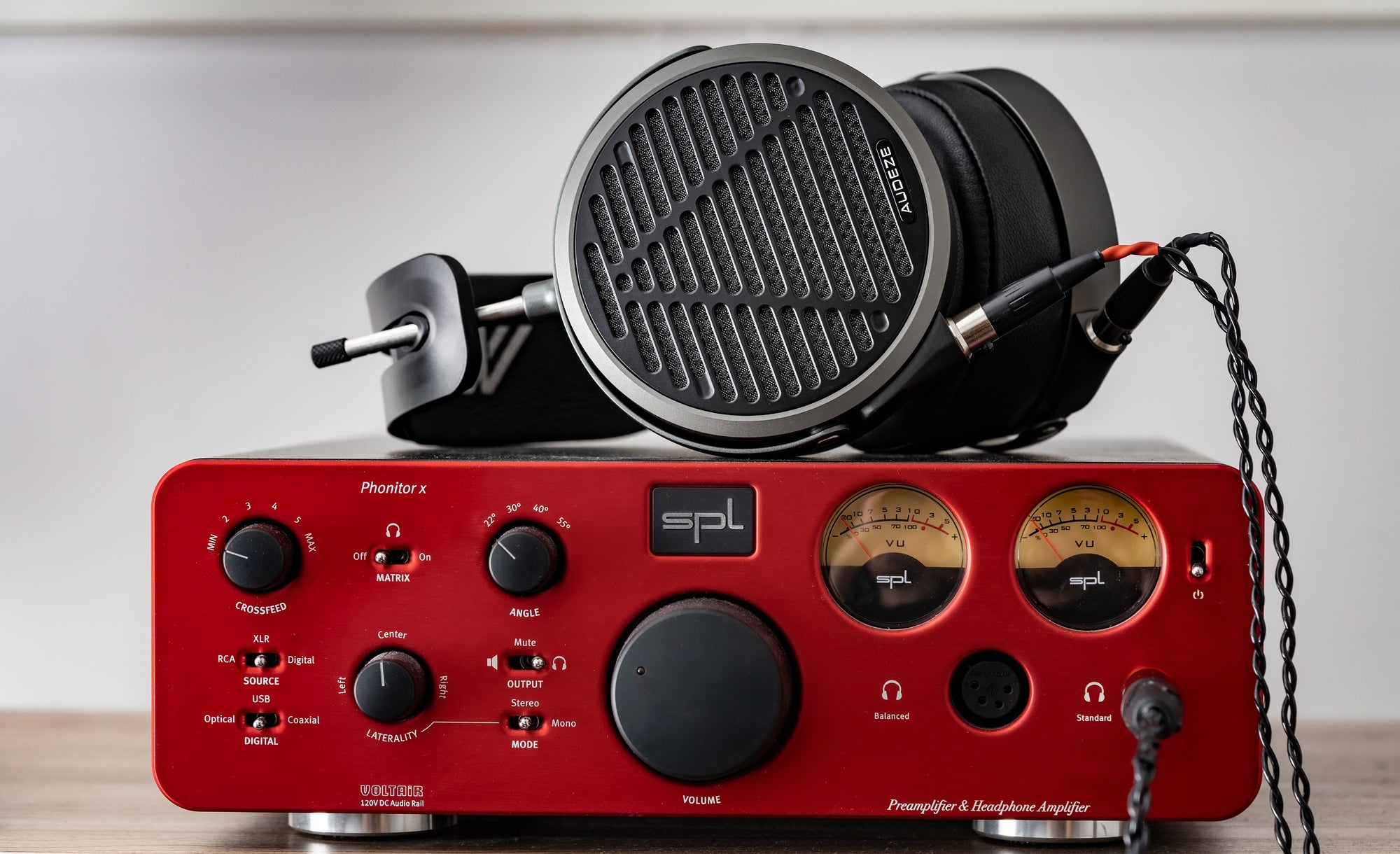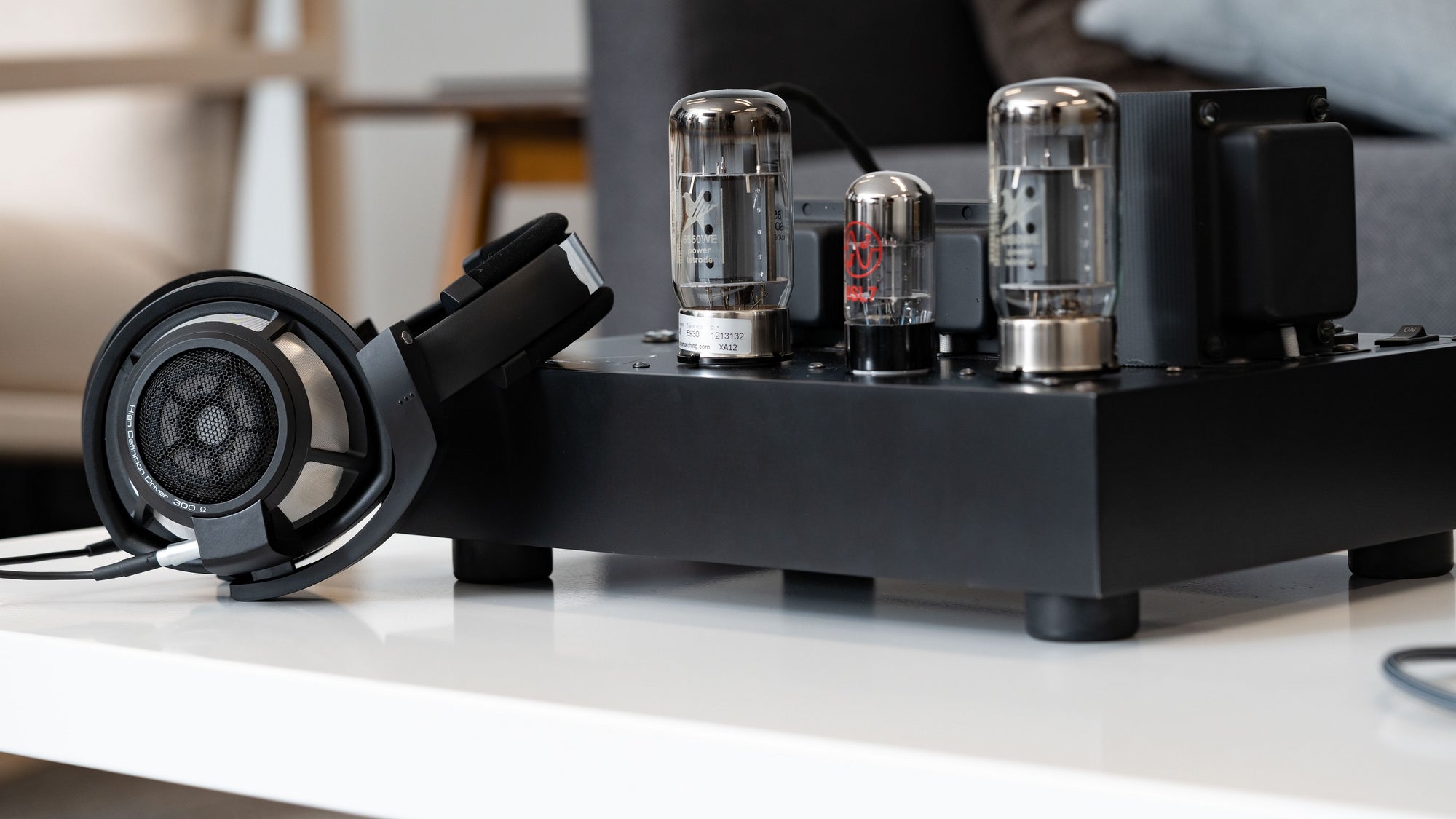Getting Started: How to Navigate the Headphone Hobby

Introduction
The world of high end headphones can be a difficult one to navigate, especially if you're brand new to the hobby. Where to start? Our headphone buying guides aim to provide a good jumping off point to get started with great-sounding gear. These guides have been updated for 2022, but it's important to know that audio doesn't always progress in the same way that other technology does. You'll see many products that stay at the top of their category over time.
A Disclaimer: There are of course headphones that we haven't heard, and it's entirely possible we'll add in the future once we hear them. Also, our recommendations are based on headphones that you can readily purchase, and excludes items that are discontinued or only available on the used market. Lastly, our recommendations should not be taken as a blanket statement of what's good or suggest that everything that didn't make it in a given category is bad, and there will be reasons to choose one product over another depending on listener preference or use case. With that said, what follows is our headphone buying guide of 2022 to help you pick the right headphones for you.
The Basics - What type of headphones do you need?

If you’re new to the world of high quality sound from headphones, there are a number of things to think about when checking out the landscape of what’s available. Before giving a list of recommended options at various price tags, here are some things to consider. Most important of all is your use case - how are you going to be using the headphones?.
If your primary use case is sitting at home in a secluded environment, congratulations, the best headphone experiences are available to you. Specifically, you’re able to dive into the world of open-back audiophile headphones.
Open-back Headphones: As the name suggests, open-back headphones aren’t suitable for noisy environments because they let sound in and out. This means that your neighbors will hear your music, and you’ll hear them talking loudly on their phones (or imagine any other situation here). The benefit of open-back headphones is that they don’t generally incur the acoustic challenges of closing off the back of the cup. This can create resonances that then go back into the ear, leading to less than desirable tonality concessions. In short, open-back headphones have the potential to sound significantly better than closed-back headphones.
Our Guide to Best Open-back Headphones in 2022
On the other hand, if you’re considering a headphone for the office, or to listen on-the-go, you will need to look at either closed-back headphones or in-ear headphones.
Closed-back Headphones: These are more well-suited for office or noisy environments where at least one of the primary goals is to block sound coming in or going out. Simply put, if you do not need to do this, then there is very little reason to look into closed-back headphones. However closed-backs have traditionally been the more commonplace type of headphone particularly because this use case is a particularly desirable function.
While not all closed-back headphones are going to sound great (or as good as open-back models), if your use case doesn’t involve travel or a high degree of portability, you’re likely able to find a better experience in sound quality with passive over-ear closed-back headphones. Moreover, this will typically still do the job of isolating you from your environment, such as an air conditioner hum in the background, or ensuring your music doesn’t disturb others around you sufficiently.
Our Guide to the Best Closed-back Headphones in 2022
Portable Headphones: Now, within closed-back headphones you also have the possibility of active noise cancelling (ANC), but that’s not to say there aren’t high end, wired audiophile headphones that forego the ANC in an attempt at achieving better sound quality simply with passive isolation going on. Typically, noise cancelling headphones will be ideally suited for portable or travel use cases, and should not be considered unless those are the primary applications. Why? The main reason for this is that ANC headphones make additional concessions to achieve their functionality - at least in nearly all cases.
Another portable option is in-ear headphones, otherwise known as IEMs (in-ear monitors). These are becoming a much more popular option, especially since great strides have been made in this area with regards to sound quality. Now, while there may be good reasons to look into IEMs over passive closed-back headphones, their main advantage is in portability. Look into IEMs if you require an ultra-transportable option - and, many are even choosing to use IEMs over over-ear headphones these days as well, even though in my opinion there is still some distance overall when it comes to sound quality.
Our Guide to the Best In-Ear Monitors (IEMs) in 2023
Common Headphone Technologies
Dynamic Drivers
This is the most common type of headphone available - partially because they’re inexpensive to produce. The transducer (driver) in these is made up of a diaphragm with a moving coil or voicecoil behind it causing the diaphragm to move in a pistonic motion, which creates sound. These diaphragms are often cones or domes of some kind, and can be composed of a variety of different materials to achieve a distinct sound. If you’ve seen a typical speaker driver, it’s most likely one of these. See our headphones with dynamic drivers.
Planar Magnetic Drivers
These are less commonly found in closed-back headphones, and are less common in general, however over the past few years they’ve seen a significant increase in popularity amongst audiophiles. Planar magnetic transducers are actually acoustically simpler than moving coil transducers. A flat diaphragm with a conductive trace affixed onto it is immersed in a magnetic field, which causes the pistonic force required to create sound. On one or either side of the diaphragm is a magnet array that creates the magnetic field. Generally these transducers have to be much larger than moving coil transducers, but there have been some attempts at producing them in the small form-factor enclosures of IEMs as well. See our headphones with planar magnetic drivers.

Other driver types
It used to be only electrostatic transducers that comprised the more ‘esoteric’ or unconventional options for headphone drivers - unconventional in the sense that there was somewhat of a barrier to entry in the requirement of an energizer - but these days there are a number of other driver types cropping up as well. For electrostatic headphones, they create pistonic motion by using a flat diaphragm, not unlike planar magnetics, but instead of using a magnet array and a trace, they use static charge to cause the movement. In general, most electrostatic headphones will sit at the very high end of price categories, and are open-back in nature.
In recent years there have also been ribbon driver headphones or ‘earspeakers’ like the Raal SR1a, as well as HEDD’s Air Motion Transfer driver headphones that move air in more of a "squeezing" fashion rather than the pistonic fashion of traditional transducers. At the moment, these are fairly unique technologies with respect to their place in headphones, but they have been around in speakers for a long time already. See our selection of headphones with more exotic drivers.
Lastly, for in-ear monitor headphones (IEMs), the most common driver type is the balanced armature. This produces motion with a kind of springboard that has a pin attached to the diaphragm. These driver types are commonly used in groups to cover the full frequency range of human hearing from 20hz up to 20khz. So you’ll commonly see IEMs with multiple balanced armature configurations, and also with other driver types to handle different frequency ranges. Important to note is that if an IEM has more balanced armatures, that does not necessarily mean it’s better than an IEM with fewer balanced armatures. It’s all about implementation.
How to determine sound quality before you buy
Without being able to listen to a headphone, it can be difficult to get a sense of both A) what it’s going to sound like, and B) whether or not you’re going to like it. In fact, without hearing a headphone, it’s impossible to fully know what it sounds like. But at the very least we can indicate a general ballpark by looking at a headphone’s frequency response in relation to a known target.
For the purposes of this article, we’ll use the Harman research as a neutral reference point, however this is a very deep subject with many interconnected reasons as to why we use this.
But in short, a headphone’s frequency response tells us how close (or how far) a headphone is from a neutral reference point, or target. So if you’re someone who likes more bass, you’ll want to look at headphones that have a frequency response with more energy below 150hz. If you want less bass, you want less energy in that region. More importantly, a headphone’s frequency response can tell you if there are any significant harmonic imbalances, shown by strong deviations that could potentially be fatiguing or not suit your preferences.
Often the most difficult area to get right is the balance between the upper midrange and treble roughly between 1.5khz and 9khz, or otherwise known as the ‘ear gain’ region. I’ve discussed this in another article, but in short, this is the region where our physical ear and ear canal most strongly amplifies sound, and our brain expects this kind of amplification. Some amount of ear gain is essential in order for a headphone to sound good, and you generally want a balance somewhere in the ballpark of what’s shown by the target. It can be more, it can be less, but some ear gain should be there because well, we generally all have ears.

Of course, there's more to good sound quality than just adherence to a target and many reviewers, myself included, claim that these measurements are only one part of the equation - the most important part, sure, but at the moment they only tell us about a headphone’s tuning or as I’ve called it “tonal balance”. They leave out all the subjectively desirable or undesirable qualities of a headphone's sound that don’t seem to be easily available in graphs (harmonic distortion has also been demonstrated to not be correlated with subjective preferences past a certain point). But if you're brand new to high quality headphones, learning how to read frequency response graphs can do a lot when it comes to determining whether or not you'll like something.
At the same time, you should be very cautious when it comes to information that is solely based on measurements, because no matter what gets claimed on this topic, there is still more to the experience than what’s available in the current data analysis. That’s not to say that it isn’t all being captured by existing metrics like frequency response and total harmonic distortion - and no, it doesn't appear to be in CSD (cumulative spectral decay) when it comes to headphones either, because that's just frequency response as well - merely that a typical analysis of this data isn’t exhaustive of the experience.
Moreover, far too frequently an over-emphasis of the data can lead to committing the quantitative fallacy (focusing so hard on what you can measure that you miss highly relevant information that you could measure but currently are not), and in more sinister cases the emergence of false narratives around given products that are based merely on a measured result. What's worse is that sometimes measurements are done incorrectly, or on non-standard rigs, and in these cases you're bound to draw incorrect conclusions about the tonal balance. In my view, it’s the experience that’s of ultimate importance and measurements, when done properly, should be treated as a tool to help guide us along the way.
Do I need a DAC? Do I need a headphone amp?

The short answer here is "yes." You do need some digital-to-analog conversion and you’ll likely want something to make it loud enough. When it comes to the former (the DAC), the good news is that you probably already have this: if you can plug your headphones into them and have them make sound, that conversion is happening. (Editor's Note: please don't plug headphones into things they shouldn't be plugged into...) The bigger question is whether you need a standalone DAC, and the enlightened answer is "maybe," depending on what you already have available.
The benefit of a separate DAC (doing the digital to analog conversion outside of your computer or smartphone etc.) is that it will be dedicated to the job of converting a digital signal (the digital information you're streaming) to an analog signal, which is what causes your headphones or speakers to produce sound. Separating the DAC from your computer or smartphone frees it from any interference that may be caused by the rest of its functionality.
But the DAC doesn't allow you to connect your headphones just yet, you also need an amplifier with a headphone output, and yes there are motherboards, sound cards, and smartphones that have headphone amplifiers built into them too. But there are still reasons to use a dedicated device for this functionality. What kind of amplifier you need may be determined by the headphones you're planning to run, but once again there are a number of "good enough" options out there that are inexpensive and versatile enough for a wide range of headphones.
How much should I spend?
There used to be a popular notion that you should spend as much on your DAC/Amp setup as you do on your headphones, but this isn't at all applicable in 2022, in part because of how good the inexpensive options have become these days - especially when it comes to DACs.
In many cases, listeners have a hard time distinguishing between $200 DACs and $2000 DACs, and while in my view differences do exist between certain types of sources, it’s not even remotely proportional to the price increase. In short, put the majority of your setup spend into the headphones (or IEMs), as long as you're able to have a decent standalone setup for your DAC/Amp (or a DAC/Amp combo). It doesn't need to be expensive. If you do want to go all out on amps and DACs, there are many options available, but don’t feel like you have to get the expensive sources to have a great experience with your headphones.
Thankfully, there are several inexpensive standalone DACs that perform extremely well; they can easily be the "all you need" for years to come. It should also be noted that some computers have dedicated DACs that perform well, and in these cases you may not need a separate device.
Examples of good budget DACs and headphone amplifiers (in no particular order):
- iFi Zen Stack
- Topping Stacks or combos
- Schiit Audio Modi Magni stack (or Modius Magnius for balanced)
- JDS Atom Stack
- Drop THX AAA Stack
- SMSL Stacks or combos
So while the whole source equipment question can be a daunting one for anyone looking to get into great sounding headphones, the bottom line is that needing an amp or DAC really shouldn't be an obstacle, and you don't need to consider an additional significant spend to get yourself up and running with the headphones you want to use. And yet..
Going to the top of the mountain: High-end source equipment
With all of that said, many listeners who have found their ideal headphones already, or perhaps have a number of headphones they really enjoy and are trying to get the most out of them, end up looking into higher-end source equipment.
There are certain synergies especially with high end headphones that are worth thinking about if you want to go all the way. But it's important to understand that the benefits enjoyed here are insignificant when compared to buying a different pair of headphones.
Far too often, I see listeners buy expensive amplifiers and DAC equipment to try to 'compensate' for a particular shortcoming in their headphones by acquiring much more.
This isn't to say there's no added benefit to the higher end source equipment. But generally, solid state amps and DACs don't impact the frequency response in any meaningful way (except where there's a particular output impedance synergy occurring, or there's a deliberate function for certain boosts like what you get with the iFi amps). So if you're not thrilled about your headphone's tonal balance, getting a higher end source isn't going to 'fix' that for you, even if it might sound better in other ways.
It's only at the point where you know what your ideal sound signature might be that I recommend reaching for higher-end DACs or amps.
Examples of high end DACs and Amps:
- iFi Pro Stack (Pro iCan and Pro iDSD)
- Ferrum Oor (Amp)
- RME ADI-2 (DAC)
- SPL Phonitor XE (Amp)
- NAIM Uniti Atom (DAC Amp)
- Chord Hugo TT2 (DAC Amp)
- Schiit Yggdrasil (DAC)
Should I care about going ‘balanced’?
Generally this isn’t something to switch systems for the sake of, unless you’re in a situation where you really need the extra power afforded by a particular balanced amplifier. The potential added output power benefit of balanced systems is the main theoretical advantage they offer, but in general you should use the output that the source in question is primarily designed around. Sometimes this could be a balanced output, sometimes single-ended.
This is also to say that balanced amplifiers aren't inherently better or universally better sounding than single ended amplifiers. With that said, if your amplifier does have a balanced output, you might as well use it, at least if it’s something that’s a good match with the headphones you’re trying to run. In situations where you have more sensitive or easy to drive headphones, pairing them with certain balanced amplifiers can actually lead to noise floor issues, and you don’t want that.
Should I think about tubes?

Many enthusiasts swear by tube amplifiers. My opinion is that if you're going to do it, go all the way with a higher-end model. Anything less will just introduce too many compromises. Most lower-end tube amplifiers will roll off the bass and treble - and you can even see the difference in a headphone's frequency response on certain tube amplifiers. So if it's a question of budget, you're going to get better value with solid state equipment: for less than $400 you can successfully drive just about any headphone out there).
But, it can't be denied that there is something unique about tube character beyond any changes in frequency response, and so for that reason I do recommend considering them.
Maybe you find this roll-off subjectively desirable. Maybe you've got a good solid state setup and you're looking for some tube character: a kind of pleasant harmonic distortion that creates a more 'euphonic' or 'sweet' experience. Also, there can be an increase in bass response for certain headphones when used with higher output impedances that tube amps often have. If this is the case, that's when it's worth considering one of these options - especially as a way of complimenting a high end setup.
I highly recommend learning about how your particular headphones (or the ones you're considering running with them) change depending on output impedance, and then look at the amp in question's output impedance. For example, with Focal headphones, you'll generally want lower output impedance, because they tend to boost the bass like crazy if paired with higher output impedances (too much in my opinion). Take that same amplifier and run it with a Sennheiser HD 800S, and it's likely to stay the same or only boost it by a couple dB at most. If you're considering inefficient planars, that limits what you should look at. But if you're looking to drive headphones with more modest power requirements, the options open up a bit.
Examples of high end tube amplifiers to consider with certain headphone setups:
- Ampsandsound Kenzie
- Ampsandsound Forge (A collaboration with Headphones.com)
- Feliks Audio Elise
- Feliks Audio Euforia
Should I Care About Cables?
While there are some cases where a different cable will make a tangible and measurable difference to the sound signature (when used with certain ribbon driver headphones for example), I recommend you not consider cables for any suggested impact on sound quality. Instead, you should care about cables to the extent that you enjoy using them.
Some cables are stiff or microphonic, and this can get in the way of your listening experience. I recommend getting aftermarket cables in situations where the stock cable is unwieldy and annoying to use. Other than that, maybe you like the look of a certain cable or combination - it's entirely subjective at that point. What you should be wary of is claims that a particular cable makes a significant difference in terms of sound quality (often at an exorbitant price for the cable), as this has yet to be demonstrated conclusively in all but edge cases.
While I won't denigrate the experiences of those who claim they've heard a difference, it's also not something I can recommend as part of a meaningful purchase consideration that will tangibly yield sound quality improvements. For all other reasons, it makes perfect sense.
